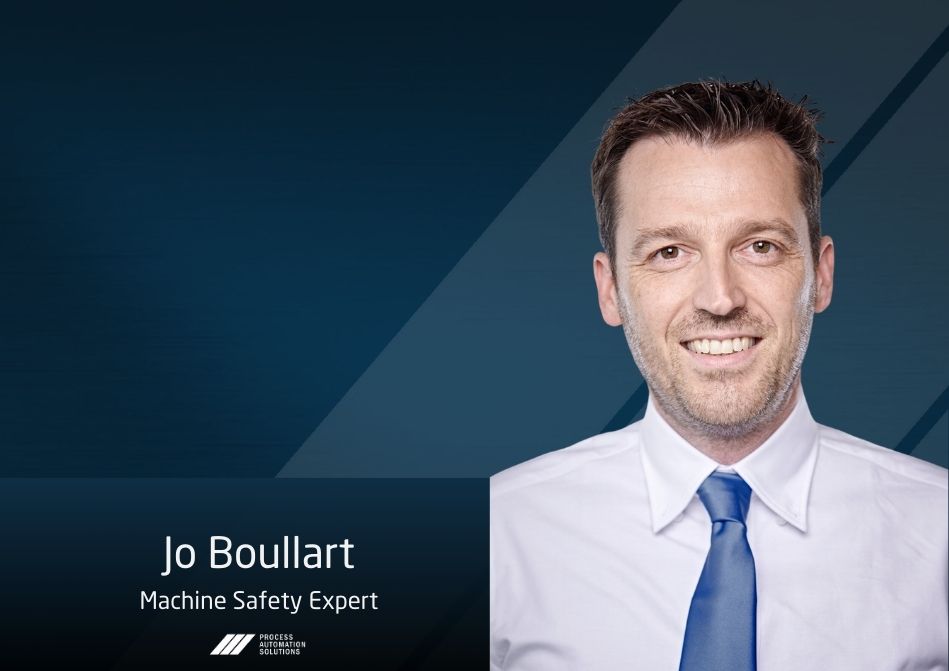Expert Interview: Machine Safety Deserves More Attention — “We Need to be Cautious About AI”
Machines drive our economy. At the same time, they also pose risks to the people who work with them, which is why we need to focus on safety in industrial environments.
Jo Boullart, machine safety expert at Process Automation Solutions, explains how manufacturing companies can improve their safety, from cybersecurity to upgrading old machines.
Jo believes it’s clear that the manufacturing industry needs to prioritize safety: “More attention needs to be paid to the risks, both in the purchase and design of new machines, and for modifications made to old machines. I regularly see hazards that could have been prevented with a proper risk analysis.”

“Older machines, in particular, have their risks,” continues Jo. ‘When users upgrade them or add new features, they often overlook the safety aspect. They only think about functionality and lose sight of the risks, which can sometimes even lead to accidents. Companies often fail to realize the existence of a dangerous situation until an accident occurs. And once something like that happens, chaos can ensue as people spring into action.”
Cyber Security
Meanwhile, the field of cyber security is also evolving rapidly, with new technological trends increasingly infiltrating machine safety. “Safety always used to be about hardware,” says Jo, “but software is playing a bigger role now. In the past, there was an emergency stop button on the machine, but now you have to program it to stop. So it’s crucial to have software that functions properly. There can occasionally be errors in these programs, for example, which could lead to unsafe situations.”
Cyber security is also becoming more important because cyber-attacks can even target machines. “We mustn’t neglect cyber security,” states Jo. “The EU’s new machine regulation, which will come into effect over the next few years, really focuses on this aspect. And the norms associated with this will of course also become very important. The safety standards we already have in place for the mechanical part now also need to be established for the software part. In terms of cybersecurity, this mainly concerns the connection between IT and OT. By connecting your machinery to an intranet and even the internet, you’re exposing your internal networks to risks from the outside world.”
Self-Learning Machines
In other words, companies need to keep their eyes open. “The EU’s new machine regulation will come into effect in the next few years,’ says Boullart, “and all European companies will need to be compliant with it by January 2027. So we are currently in a transitional period. There are still some new elements emerging in the regulation, such as artificial intelligence (AI). And finally, the documentation will also need to be improved. In some cases, we will no longer need to provide paper manuals with machines in future; a digital version will suffice.”
In other words, machine safety is far from stagnant. “Software and AI are things we need to be cautious about when implementing them in machines,” warns Jo. “We will be moving more towards self-learning machines in the future – machines that adapt themselves to work more efficiently. This clearly has a lot of potential but also needs to be done safely. How do we prevent a self-learning machine from teaching itself unsafe practices, for example? We have to figure out the answers to all these questions over the next few years.”






